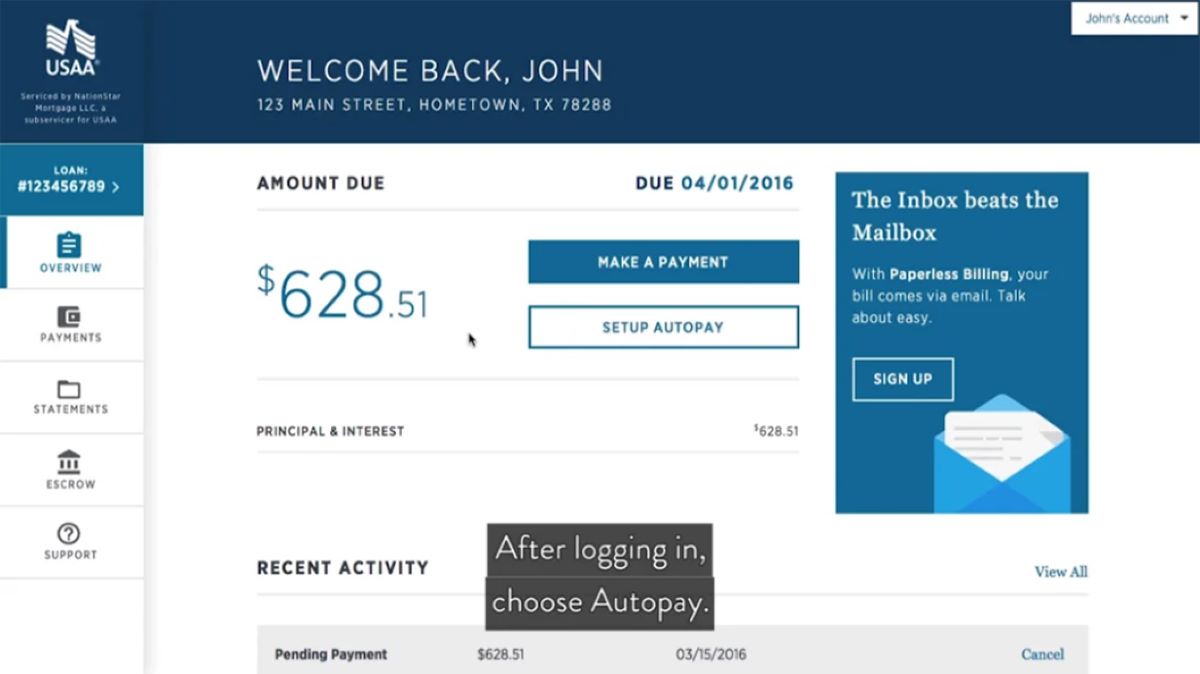

Finance
What Is An LP In Venture Capital
Published: January 21, 2024
Learn about the role of limited partnerships (LPs) in venture capital and how they contribute to the finance industry. Gain insights into LP structures and their impact on investment strategies.
(Many of the links in this article redirect to a specific reviewed product. Your purchase of these products through affiliate links helps to generate commission for LiveWell, at no extra cost. Learn more)
Table of Contents
Introduction
Understanding the intricacies of venture capital can be a challenging endeavor, but one key player in this dynamic ecosystem is the Limited Partner (LP). LPs play a crucial role in providing capital to venture capital firms and fueling innovation and growth in the startup landscape. In this article, we will delve deeper into the definition of an LP, their roles and responsibilities, the process of selecting LPs, and the benefits and challenges that come with investing as an LP.
At its core, a Limited Partner is an individual, organization, or institutional investor that contributes capital to a venture capital fund. Unlike General Partners (GPs) who actively manage the investments and operations of the fund, LPs are typically passive investors who contribute financial resources to the fund and entrust the GPs with the responsibility of making investment decisions.
LPs provide the necessary capital to venture capital firms, allowing them to invest in early-stage startups and high-growth companies. This capital is crucial for startups as it allows them to scale their operations, fuel innovative research and development, and bring game-changing products or services to market. By investing in venture capital funds, LPs gain exposure to a diversified portfolio of high-potential companies, while spreading their risk across various industries and geographies.
LPs play different roles and bear distinct responsibilities within the venture capital ecosystem. While GPs are actively involved in the day-to-day operations and decision-making process, LPs typically take on a more hands-off approach. Their primary responsibility is to provide capital to the fund and entrust the GPs to use their expertise in making investment decisions.
LPs also have the opportunity to participate in the due diligence process, where they can review potential investments, evaluate the fund’s investment strategy, and provide feedback and insights to the GPs. However, the final decision-making authority rests with the GPs.
LPs differ from GPs in several key aspects. GPs are the ones who initiate and manage the venture capital fund, while LPs are the investors who provide the capital. GPs are responsible for sourcing and evaluating investment opportunities, negotiating deals with the startups, and actively managing the portfolio companies. In contrast, LPs delegate these tasks to the GPs and focus on providing capital and evaluating the performance of the fund.
In the next sections, we will explore the LP selection process, the agreements and terms involved, as well as the benefits and risks associated with investing as an LP in the venture capital landscape. Understanding the role and dynamics of LPs is crucial, as it provides insights into one of the key pillars of the venture capital ecosystem and contributes to the growth and success of the startup ecosystem.
Definition of LP
A Limited Partner (LP) is a type of investor who contributes capital to a venture capital fund. LPs provide the financial resources that enable venture capital firms to invest in promising startups and high-growth companies. Unlike General Partners (GPs) who actively manage the fund and make investment decisions, LPs have a more passive role and entrust the GPs with the responsibility of deploying their capital.
LPs can be individuals, organizations, or institutional investors, such as pension funds, endowments, and insurance companies. They commit a certain amount of capital to the fund, often in the form of a long-term investment. In return for their investment, LPs receive a portion of the profits generated by the fund, as well as potential capital appreciation if the fund’s investments are successful.
The LP-GP relationship is typically governed by a legal agreement known as the Limited Partnership Agreement (LPA). This agreement outlines the terms and conditions of the partnership, including the capital commitment, profit-sharing arrangements, and the rights and responsibilities of both the LPs and GPs.
One of the defining features of LPs is their limited liability. This means that their financial risk is limited to the amount of capital they have committed to the fund. In the event of losses or liabilities incurred by the fund’s investments, the LPs are not personally liable beyond their initial capital contribution.
LPs play a critical role in the venture capital ecosystem by providing the necessary capital for GPs to invest in startups and fuel innovation. Their investments support the growth and development of early-stage companies by providing them with the funds needed to scale their operations, hire talent, develop products, and expand into new markets.
LPs are attracted to venture capital investments for several reasons. Firstly, investing in venture capital allows them to diversify their investment portfolio beyond traditional asset classes such as stocks and bonds. This diversification can help mitigate risk and potentially generate higher returns. Additionally, venture capital investments offer the potential for significant capital appreciation if the portfolio companies are successful and achieve a liquidity event, such as an acquisition or an initial public offering (IPO).
Furthermore, LPs benefit from the expertise and network of the GPs. GPs typically have deep industry knowledge and experience, which enables them to identify promising investment opportunities and provide value-added support to portfolio companies. LPs can leverage this expertise by gaining exposure to a diversified portfolio of startups without having to directly manage the investments themselves.
In the next sections, we will explore the specific roles and responsibilities of LPs, the selection process for LPs, as well as the agreements and terms associated with investing as an LP in the venture capital world.
LPs in Venture Capital
LPs play a crucial role in the world of venture capital, providing the capital needed to fuel innovation and growth in the startup ecosystem. Without the financial support of LPs, venture capital firms would not have the resources to invest in early-stage startups and high-potential companies.
One key benefit of LPs in venture capital is their ability to provide long-term, patient capital. Unlike other types of investors who may focus on short-term returns, LPs understand that venture capital investments require time and patience to mature. They are willing to commit their capital for an extended period, knowing that it may take years for the investments to generate significant returns.
LPs also contribute to the diversification of investment portfolios. By investing in venture capital, LPs gain exposure to a wide range of industries, technologies, and geographies. This diversification helps mitigate risks and can potentially lead to higher overall returns. Additionally, LPs can choose to invest in different venture capital funds, allowing them to further diversify their investments across various strategies and stages of the startup life cycle.
Furthermore, LPs have the opportunity to leverage the expertise and networks of the GPs. GPs are typically experienced professionals who have deep industry knowledge and relationships within the startup ecosystem. They actively source and evaluate potential investment opportunities, conduct due diligence, and provide support and guidance to portfolio companies. LPs can benefit from this expertise by gaining exposure to a diversified portfolio of startups and accessing the insights and connections of the GPs.
Another important role of LPs is evaluating the performance of the venture capital fund. LPs typically receive regular updates and reports from the GPs regarding the progress and performance of the portfolio companies. These reports provide transparency and accountability to the LPs, allowing them to assess the fund’s performance and make informed decisions about future investments.
LPs also have the opportunity to participate in the fund’s decision-making process to some extent. They can provide feedback and insights during the due diligence phase and have the ability to voice their opinions on investment opportunities. However, the final decision-making authority lies with the GPs, as they are responsible for managing the fund and making investment decisions based on their expertise.
Overall, LPs are crucial stakeholders in the venture capital ecosystem. By providing capital, diversification, and access to expertise, they enable venture capital firms to invest in innovative startups and contribute to the growth and development of the entrepreneurial landscape. LPs play a passive but essential role, supporting the ecosystem behind the scenes and driving innovation and economic growth.
Roles and Responsibilities of LPs
While Limited Partners (LPs) in venture capital may have a more passive role compared to General Partners (GPs), they still hold important roles and responsibilities within the investment partnership. Let’s explore some of the key roles and responsibilities of LPs:
1. Providing Capital:
The primary responsibility of an LP is to provide capital to the venture capital fund. LPs commit a certain amount of capital to the fund, which is then used by the GPs to make investments in startups and high-growth companies. LPs contribute their financial resources with the expectation of generating returns on their investments over the long term.
2. Evaluating Investment Opportunities:
While LPs typically have a more passive role in the decision-making process, they often have the opportunity to participate in the due diligence process. This involves reviewing potential investment opportunities and providing feedback and insights to the GPs. LPs can evaluate the investment strategy, assess the market potential of target companies, and pose questions or concerns to the GPs during the evaluation stage. However, the final investment decisions remain the responsibility of the GPs.
3. Assessing Fund Performance:
LPs have a keen interest in evaluating the performance of the venture capital fund. They receive regular updates and reports from the GPs regarding the progress and performance of the portfolio companies. These reports provide transparency to the LPs and allow them to assess the financial health and growth trajectory of the fund. LPs can use this information to make informed decisions about future investments in the fund.
4. Portfolio Management:
While LPs do not actively manage the investments in the portfolio, they play a crucial role in managing their own investment portfolios. LPs make strategic decisions about the allocation of their investment capital among different venture capital funds and other asset classes. They aim to create a diversified portfolio that balances risk and return, considering factors such as the fund’s investment strategy, track record, and risk profile.
5. Networking and Relationship Building:
LPs have the opportunity to develop relationships and networks within the venture capital ecosystem. They can connect with other LPs, GPs, and industry experts, attending conferences and events to stay updated on industry trends and opportunities. These networking activities enable LPs to gain insights, share experiences, and potentially discover investment prospects outside of the fund they are invested in.
6. Long-Term Commitment:
LPs typically enter into a long-term commitment with the venture capital fund. They understand that venture capital investments require time to mature and generate returns. LPs need to have a long-term investment horizon and be patient with their capital, as it may take several years for the fund’s investments to realize their full potential.
Overall, LPs have a significant role to play in the venture capital ecosystem. While they may not have direct control over investment decisions, they provide the essential capital needed for venture capital funds to invest in startups and drive innovation and economic growth. LPs’ responsibilities include providing capital, evaluating investment opportunities, assessing fund performance, managing their investment portfolios, networking, and maintaining long-term commitments.
LPs vs GPs: Key Differences
The venture capital industry relies on the collaboration between Limited Partners (LPs) and General Partners (GPs) to fuel innovation and support the growth of startups. While both LPs and GPs play crucial roles in the investment process, there are key differences between these two types of investors.
1. Investment Decision-Making:
One significant difference between LPs and GPs is their involvement in the investment decision-making process. GPs have the authority and responsibility to make investment decisions on behalf of the fund. They actively source and evaluate potential investment opportunities, negotiate deals with startups, and oversee the management of the portfolio companies. On the other hand, LPs have a more passive role and generally do not participate directly in the investment decision-making process. They entrust the GPs with the responsibility of making investment decisions based on their expertise and industry knowledge.
2. Financial Risk and Liability:
LPs and GPs also differ in terms of financial risk and liability. GPs typically have a higher exposure to risk and liability compared to LPs. GPs have a fiduciary duty to act in the best interests of the fund and its LPs and can be held personally liable for any misconduct or negligence. In contrast, LPs have limited liability, meaning that their financial risk is limited to the amount they have invested in the fund. LPs are not personally responsible for the debts or liabilities of the fund or its portfolio companies beyond their initial capital investment.
3. Active vs. Passive Role:
GPs are actively involved in the day-to-day operations of the venture capital fund. They work closely with portfolio companies, providing strategic guidance, operational support, and leveraging their networks to help companies scale and succeed. LPs, on the other hand, have a more passive role in the operations of the fund. Their primary responsibility is to provide capital and evaluate the performance of the fund. While LPs may have the opportunity to provide feedback and insights during the due diligence process, the final decision-making authority lies with the GPs.
4. Compensation Structure:
LPs and GPs also differ in their compensation structure. GPs typically receive compensation in the form of a management fee and a carried interest. The management fee is a percentage of the fund’s committed capital and is used to cover operational expenses and compensate the GPs for their management services. The carried interest is a share of the profits generated by the fund and serves as an incentive for the GPs to deliver strong investment returns. LPs, on the other hand, receive returns on their investments based on the fund’s performance, but do not typically receive management fees or carried interest.
5. Investment Horizon:
LPs and GPs also differ in their investment horizon. GPs typically have a shorter investment horizon as they aim to invest in startups with the expectation of achieving a liquidity event, such as an acquisition or an initial public offering (IPO), within a few years. In contrast, LPs have a longer-term investment horizon and are willing to commit their capital for an extended period. They understand that venture capital investments require time to mature and generate significant returns.
In summary, LPs and GPs have distinct roles and responsibilities within the venture capital ecosystem. GPs are actively involved in making investment decisions, managing the fund, and working closely with portfolio companies. LPs, on the other hand, have a more passive role, providing capital, assessing fund performance, and managing their investment portfolios. With their different levels of involvement, risk exposure, compensation structures, and investment horizons, LPs and GPs complement each other’s roles to drive innovation and growth in the startup ecosystem.
LP Selection Process
The process of selecting Limited Partners (LPs) in a venture capital fund is a crucial step that requires careful evaluation and due diligence. GPs undertake a thorough selection process to identify LPs who align with the fund’s investment strategy, objectives, and long-term vision. Let’s explore the key steps involved in the LP selection process.
1. Fundraising Strategy:
GPs first define their fundraising strategy, which includes determining the fund size, target LP profile, and investment focus. They assess their own investment expertise, track record, and sector specialization to identify the types of LPs that would be interested in their fund. GPs also consider the geographic location of potential LPs, as proximity can facilitate ongoing communication and relationship building.
2. Outreach and Networking:
GPs actively engage in outreach and networking activities to build relationships with potential LPs. They attend conferences, industry events, and LP-specific gatherings to connect with institutional investors, family offices, high-net-worth individuals, and other entities that may be interested in venture capital investments. These interactions serve as an opportunity for GPs to present their fund’s investment thesis, track record, and value proposition to potential LPs.
3. Due Diligence:
Once potential LPs express interest in the fund, GPs perform due diligence on the potential LPs. This process involves evaluating various factors such as the LP’s investment history, previous fund commitments, ability to meet capital commitments, reputation, alignment with the fund’s objectives, and any restrictions or preferences they may have regarding investment focus or geographic coverage. GPs may also conduct background checks, verify references, and assess the financial stability of potential LPs.
4. Legal and Regulatory Considerations:
GPs work closely with legal advisors to ensure compliance with regulatory requirements and establish terms and conditions that protect the interests of both the fund and the LPs. This involves drafting a Limited Partnership Agreement (LPA) that outlines the capital commitments, profit-sharing arrangements, governance rights, reporting requirements, and any other terms specific to the LPs’ involvement in the fund.
5. Selection and Allocation:
Based on the information gathered during the due diligence process and consideration of the fund’s fundraising goals, GPs make decisions on which LPs to include in the fund. This stage involves analyzing the overall fundraising target, the expected size and contribution of each LP, and ensuring an appropriate mix of LPs that align with the fund’s strategy. The goal is to create a diverse base of LPs who collectively contribute the necessary capital and provide valuable industry expertise and networks.
6. Ongoing Relationship Management:
Once the LPs have been selected and the fund is operational, GPs maintain ongoing communication and relationship management with the LPs. This includes regular updates on the fund’s performance, providing transparency and accountability to LPs, and addressing any inquiries or concerns they may have. GPs also consider opportunities for LP engagement, such as inviting them to attend portfolio company events or participate in industry-specific discussions or conferences.
The LP selection process is a critical component of a venture capital fund’s success. By carefully evaluating potential LPs based on their investment history, alignment with the fund’s strategy, and overall fit, GPs can build a strong and supportive LP base that contributes capital, expertise, and networks to fuel the growth and success of the fund’s portfolio companies.
LPs in Fundraising
Limited Partners (LPs) play a significant role in the fundraising process of a venture capital fund. LPs are the investors who provide the capital that fuels the fund’s ability to invest in high-potential startups and fuel innovation. Let’s explore the key aspects of LPs in the fundraising process:
1. Capital Commitment:
LPs commit a specific amount of capital to the venture capital fund. This commitment is typically made for the long term, as venture capital investments often require several years to mature and generate returns. The capital commitment from LPs forms the basis for the fund’s investment capacity and enables General Partners (GPs) to make investment decisions on behalf of the fund.
2. Portfolio Diversification:
LPs may choose to invest in multiple venture capital funds to create a diversified portfolio of investments. By diversifying their investments across different funds, LPs can spread their risk and potentially achieve higher returns. Each fund may have a different investment focus, such as early-stage startups, specific industries, or geographic regions. LPs strategically allocate their capital among different funds to create a portfolio that aligns with their risk tolerance and investment objectives.
3. Due Diligence:
Before committing capital to a venture capital fund, LPs typically undertake their own due diligence process. They evaluate various factors, such as the track record and experience of the GPs, the fund’s investment strategy and approach, the performance of previous funds managed by the same GPs, and the potential for generating attractive returns. LPs may also review the fund’s portfolio companies, assess the team’s industry expertise, and consider any specific risks associated with the investment strategy.
4. Negotiating Terms and Conditions:
During the fundraising process, LPs and GPs negotiate the terms and conditions of the Limited Partnership Agreement (LPA). The LPA governs the relationship between the LPs and the GPs, including the capital commitment, profit-sharing arrangements, governance rights, reporting requirements, and other important provisions. LPs work with legal advisors to ensure the LPA reflects their investment objectives and protects their interests.
5. Capital Calls and Contributions:
As the fund deploys capital into investments, LPs are typically required to make capital contributions to fulfill their committed capital. These capital calls occur periodically and are announced to LPs in advance. LPs then contribute the designated amount of capital per the capital call notice. The contributions from LPs provide the necessary funds for the GPs to invest in startups and support their growth.
6. Reporting and Updates:
Throughout the life of the fund, LPs receive regular reports and updates from the GPs regarding the fund’s performance, portfolio companies, and relevant industry trends. These reports provide transparency and accountability, allowing LPs to assess the fund’s progress and make informed decisions about their future involvement. GPs may also hold periodic meetings or investor conferences to provide additional insights and engage with LPs on specific issues or topics.
Overall, LPs are instrumental in the fundraising process of a venture capital fund. Their capital commitments, due diligence, and ongoing support provide the necessary resources for the GPs to make impactful investments in startups. By carefully selecting and engaging with LPs who align with the fund’s investment objectives and long-term vision, venture capital funds can thrive and contribute to the growth of the startup ecosystem.
LP Agreements and Terms
When Limited Partners (LPs) participate in a venture capital fund, they enter into a legal agreement known as the Limited Partnership Agreement (LPA). The LPA outlines the terms and conditions of the partnership, including the rights and responsibilities of the LPs and General Partners (GPs). Let’s explore the key agreements and terms typically included in LP agreements:
1. Capital Commitment:
The LPA specifies the capital commitment that LPs make to the fund. This commitment represents the amount of capital that LPs will contribute to the fund over the life of the partnership. It is essential for LPs to fulfill their capital commitments as required by the fund to ensure adequate capital for investments and operations.
2. Profit-Sharing Arrangements:
The LPA specifies the profit-sharing arrangements between LPs and GPs. This typically includes both the distribution of profits and the allocation of losses. The specific formula for profit-sharing may vary, but it often involves the GPs receiving a share of the profits (known as carried interest) after a certain threshold or hurdle rate of return has been achieved. LPs generally receive the remaining profits in proportion to their capital contributions.
3. Governance Rights:
The LPA may outline the governance rights that LPs possess. While LPs typically have a more passive role in decision-making, they may still have certain rights and privileges, such as the right to receive financial reports and updates on the fund’s performance, the ability to nominate or appoint a representative to the advisory board, or the right to vote on specific matters relating to the fund or its portfolio companies.
4. Reporting and Communication:
The LPA often contains provisions related to reporting and communication between LPs and GPs. GPs are generally required to provide regular reports and updates on the fund’s activities, portfolio companies, financial performance, and any relevant developments or material changes. This communication ensures transparency and enables LPs to stay informed about the progress of the fund and their investments.
5. Transfer of Interests:
The LPA may address the procedures and restrictions for transferring LP interests. LPs may have the desire or need to transfer their interests to another party during the life of the fund. The agreement may outline the conditions under which transfers are permitted, any administrative or procedural requirements involved, and any limitations or restrictions on transferring interests without the consent of the GPs or other LPs.
6. Confidentiality and Non-Disclosure:
Confidentiality and non-disclosure provisions are typically included in the LPA to protect sensitive information shared between LPs and GPs. Both parties agree to maintain the confidentiality of proprietary information, trade secrets, and other confidential data related to the fund and its investments. This provision helps maintain the integrity and confidentiality of the fund’s operations and protects the interests of all parties involved.
7. Termination and Duration:
The LPA also addresses the termination and duration of the partnership. It may specify the duration of the partnership and the circumstances under which it can be extended or terminated. This provision ensures clarity and provides a framework for the eventual dissolution of the partnership, either through a defined period or through other specified triggers such as the achievement of a certain return threshold or the occurrence of certain events.
It is important for LPs to carefully review and understand the provisions within the LPA before committing to a venture capital fund. Seeking legal advice and conducting thorough due diligence can ensure that LPs are fully aware of their rights, obligations, and protections as outlined in the agreement.
By establishing clear agreements and terms through the LPA, LPs and GPs can foster a mutually beneficial relationship, promote transparency and accountability, and lay a solid foundation for the successful operation and management of the venture capital fund.
Benefits of LP Investment
Investing as a Limited Partner (LP) in a venture capital fund offers a range of benefits and advantages for investors. LPs play a crucial role in fueling innovation and supporting the growth of startups. Let’s explore some of the key benefits of LP investment:
1. Diversification:
LP investment in venture capital funds allows for diversification of investment portfolios. By investing in a fund, LPs gain exposure to a diversified pool of startups and high-growth companies across various industries and sectors. This diversification helps spread risk, enabling LPs to potentially achieve higher returns while minimizing the impact of any individual investment’s performance.
2. Access to Promising Startups:
LPs gain access to a pipeline of promising startups that would typically be challenging to identify and invest in individually. Venture capital funds often have extensive networks and resources to source and evaluate investment opportunities, giving LPs the benefit of exposure to early-stage companies with high growth potential.
3. Exposure to Innovation and Disruption:
Venture capital investments provide LPs with exposure to innovative technologies and disruptive business models. Startups often introduce game-changing products or services, and LPs have the opportunity to be at the forefront of new trends and advancements in various industries. This exposure to innovation can yield substantial returns and contribute to a well-rounded investment portfolio.
4. Potential for High Returns:
Venture capital investments have the potential to deliver significant returns compared to more traditional asset classes. Successful investments in early-stage companies can generate exponential growth and create substantial value. LPs can participate in this growth by investing in venture capital funds, leveraging the expertise and experience of professional fund managers.
5. Expertise and Network of General Partners:
LPs benefit from the expertise and network of General Partners (GPs) managing the venture capital fund. GPs have industry knowledge, connections, and experience in evaluating, supporting, and scaling startups. LPs can leverage this expertise to gain insights, access valuable networks, and make informed investment decisions. The involvement of GPs can enhance the likelihood of successful investments in companies with the potential to disrupt industries.
6. Portfolio Management by Professionals:
LPs entrust the portfolio management and investment decisions to experienced professionals, relieving them of the need for active involvement in day-to-day operations. With GPs closely monitoring and managing the investments, LPs can passively participate in the growth of portfolio companies, benefiting from the GPs’ skills and efforts without the need for direct involvement.
7. Exposure to Liquidity Events:
Venture capital investments provide the opportunity for LPs to participate in potential liquidity events such as acquisitions or initial public offerings (IPOs) of portfolio companies. These events can generate substantial returns for LPs and contribute to their investment performance.
It is important for LPs to recognize that venture capital investments are typically long-term in nature and require patience and a tolerance for risk. However, with the potential for high returns, exposure to innovation, diversification, and access to opportunities that would otherwise be challenging to access, investing as an LP in venture capital funds can be a compelling strategy for investors looking for growth and exposure to high-potential startups.
Risks and Challenges for LPs
While investing as a Limited Partner (LP) in venture capital funds offers potential benefits, it is important to be aware of the risks and challenges associated with this type of investment. LPs face several considerations that can impact their returns and overall investment experience. Let’s explore some of the key risks and challenges for LPs:
1. Market Risk:
Venture capital investments are subject to market risk. The performance of the fund’s investments can be influenced by broader economic conditions, market volatility, and industry-specific factors. Economic downturns or sector-specific challenges can impact the valuations and viability of portfolio companies, potentially leading to a decrease in the value of the LP’s investment.
2. Illiquidity:
LP investments in venture capital funds are typically illiquid, meaning that funds are committed for a long period, often several years. Selling or exiting an investment before the fund’s life cycle can be challenging or impossible. LPs need to be prepared for illiquidity and have the financial flexibility to hold investments until a liquidity event occurs, such as an acquisition or an initial public offering (IPO).
3. Limited Control and Information:
LPs have limited control over the day-to-day operations and decision-making within the fund. Investment decisions are made by General Partners (GPs), who have expertise and discretion in managing the fund. LPs must rely on the GPs for investment decisions, due diligence, and portfolio management. This limited control can present challenges, as LPs must be comfortable with entrusting their capital to the judgment and abilities of the GPs.
4. Concentration Risk:
LPs often invest in multiple venture capital funds to diversify their portfolios. However, there can still be concentration risk within each fund. If a specific fund’s investments do not perform as expected, it can have a significant impact on the LP’s overall returns. LPs need to carefully assess their exposure to specific funds and ensure they are comfortable with the fund’s investment strategy and portfolio composition.
5. Capital Calls and Timing:
LPs should be prepared for capital calls and the associated timing. When a fund requires additional capital for investments or operational expenses, LPs are required to contribute their committed capital. The timing of the capital calls can be unpredictable, and LPs must have the financial capacity to fulfill their commitments within the designated timeframe.
6. Manager Risk:
LPs rely heavily on the expertise and track record of the GPs in managing the fund. The performance of the fund is directly tied to the investment decisions made by the GPs. If the GPs lack experience, make poor investment choices, or face challenges in managing the fund, it can have a detrimental impact on the LP’s returns.
7. Failed Investments:
Venture capital investments come with inherent risks. Not all startups or portfolio companies will succeed. Some investments may fail to meet expectations or experience challenges that lead to a loss of capital. LPs need to be prepared for the possibility of failed investments and understand that the success of the fund’s overall performance relies on a few significant returns offsetting the losses.
Investing as an LP in venture capital funds can be rewarding but requires careful consideration of the risks and challenges involved. LPs should conduct thorough due diligence on the fund, consider their risk tolerance, assess the track record of the GPs, and ensure they have a diversified portfolio that aligns with their investment objectives. By being aware of these risks and challenges, LPs can make informed investment decisions and manage their expectations accordingly.
LP Exit Strategies
Exiting investments is a crucial aspect of investing as a Limited Partner (LP) in venture capital funds. LPs should carefully consider their exit strategies to realize returns and manage their investments effectively. Let’s explore some common exit strategies employed by LPs:
1. Initial Public Offering (IPO):
An IPO is one of the most sought-after exit strategies for venture capital investments. LPs can sell their ownership stakes in portfolio companies when they go public. Going public allows LPs to sell their shares on the open market, providing liquidity and potentially realizing significant returns. However, the timing and success of an IPO are dependent on market conditions, regulatory requirements, and the readiness of the portfolio company.
2. Acquisition:
Acquisition is another common exit strategy for LPs. When a portfolio company is acquired by a larger corporation, LPs can sell their ownership stakes to the acquiring entity. Acquisitions can provide liquidity to LPs and potentially generate substantial returns. However, the timing and availability of acquisition opportunities are outside of LPs’ control and depend on the strategic goals and decision-making of the portfolio companies and potential acquirers.
3. Secondary Market Sales:
In certain situations, LPs may sell their ownership stakes to other investors in the secondary market. These transactions can provide liquidity to LPs, especially when they have a need to exit investments before a liquidity event such as an IPO. Secondary market sales allow LPs to monetize their investments and potentially realize returns without having to wait for a traditional exit event.
4. Recapitalization:
In some cases, portfolio companies may go through a recapitalization process. This involves restructuring the ownership structure or raising additional capital to fuel growth. During a recapitalization, LPs may have the opportunity to sell a portion of their ownership stakes to new investors, providing liquidity and adjusting their investment exposure. Recapitalization can offer flexibility for LPs and allow them to partially exit investments while still maintaining a stake in the company.
5. Strategic Sale:
LPs may consider a strategic sale of their ownership stakes to specific strategic investors. These strategic sales often involve investors or companies that have a particular interest in the industry or technology of the portfolio company. Strategic buyers may value the portfolio company’s strategic potential and be willing to pay a premium for the ownership stakes. Strategic sales can provide LPs with attractive exit opportunities and potentially generate favorable returns.
6. Hold and Harvest:
In some cases, LPs may choose to hold their ownership stakes in portfolio companies and wait for future opportunities to monetize their investments. This “hold and harvest” strategy allows LPs to benefit from the potential long-term growth of the company. LPs may wait for an optimal market condition, improved company performance, or a better valuation before considering an exit. However, LPs must be prepared for an extended holding period and understand the potential risks and rewards associated with this strategy.
It is essential for LPs to work closely with General Partners (GPs) to align on exit strategies and continuously evaluate the potential for liquidity events. Ultimately, the timing and success of an exit strategy depend on various factors, including market conditions, the performance of the portfolio company, industry dynamics, and overall investor sentiment. LPs must remain adaptable and continuously assess their investment portfolio to optimize their exit opportunities and maximize returns.
Conclusion
As we’ve explored in this article, Limited Partners (LPs) play a crucial role in the world of venture capital. By providing capital, diversification, and access to expertise, LPs enable venture capital funds to invest in innovative startups and contribute to the growth and success of the entrepreneurial landscape.
LPs benefit from the potential for high returns, exposure to disruptive innovation, and access to a pipeline of promising startups. They gain exposure to a diversified portfolio, allowing them to spread risk and potentially achieve higher overall returns. Additionally, LPs can leverage the expertise and networks of General Partners (GPs), who actively manage the fund’s investments and provide support to portfolio companies.
However, LPs also face risks and challenges, including market volatility, illiquidity, limited control, concentration risk, and the potential for failed investments. It is crucial for LPs to carefully evaluate the investment opportunities, conduct due diligence, and align their investment strategies with their risk tolerance and investment objectives.
Through the Limited Partnership Agreement (LPA), LPs and GPs establish the terms and conditions of their partnership, including capital commitments, profit-sharing arrangements, governance rights, and reporting requirements. Thorough understanding and negotiation of these terms are critical to protecting the interests of LPs and ensuring a transparent and mutually beneficial partnership.
LPs also need to consider their exit strategies. Whether through IPOs, acquisitions, secondary market sales, recapitalizations, strategic sales, or holding and harvesting, planning for exit opportunities is essential for LPs to realize returns and effectively manage their investments.
In conclusion, LPs provide the necessary capital and support to venture capital funds, driving innovation, and fueling the growth of promising startups. While LP investments come with risks and challenges, the potential for high returns, exposure to disruptive technologies, and access to professional management make them an appealing opportunity for investors seeking growth and diversification. By carefully selecting funds, engaging with GPs, and continuously evaluating their investment portfolios, LPs can navigate the venture capital landscape and potentially reap significant rewards.














